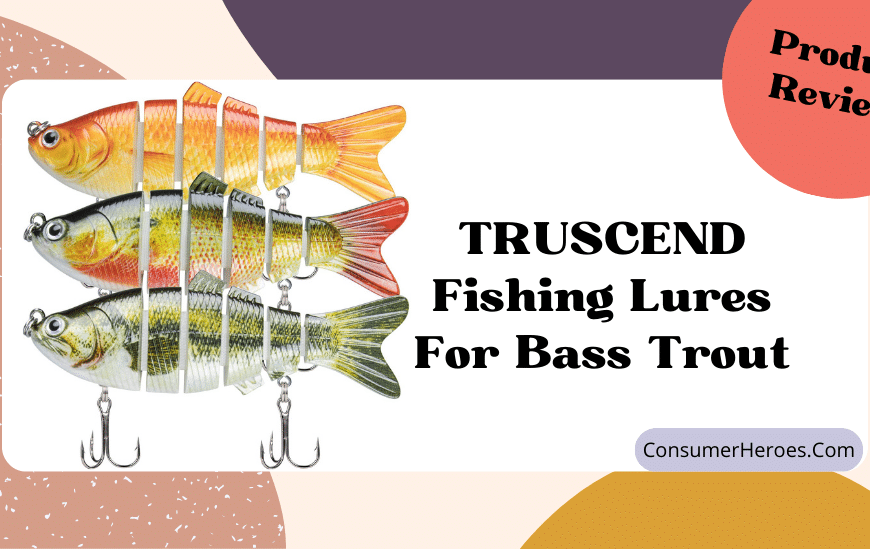Fishing is a popular outdoor activity that requires proper equipment and techniques. One of the most important pieces of equipment is the fishing pole, or rod. A fishing pole consists of several parts, including the reel, line, and most importantly, the string or fishing line. Stringing a fishing pole may seem daunting at first, but with the right tools and knowledge, it can be done quickly and easily.
The first step in stringing a fishing pole is to choose the right type of line. There are several types of fishing lines available, including monofilament, fluorocarbon, and braided lines. Each type of line has its own unique properties and is better suited for certain types of fishing. It is important to choose the right line for the type of fishing you plan to do. Once you have chosen the right line, you can move on to the next step in the process.
The next step is to attach the line to the reel. This is done by tying a knot in the line and attaching it to the reel spool. There are several types of knots that can be used, but the most common is the arbor knot. Once the line is attached to the reel, it can be wound onto the spool. It is important to wind the line onto the spool evenly and tightly to prevent tangles and ensure a smooth cast. By following these steps, anyone can successfully string a fishing pole and be ready for a day on the water.
Understanding Fishing Poles
Fishing poles, also known as fishing rods, are essential tools for any angler. They come in various lengths, weights, and materials, each serving a specific purpose. Understanding the different types of fishing poles is crucial for selecting the right one for your fishing needs.
Types of Fishing Poles
There are three main types of fishing poles: spinning, baitcasting, and fly fishing.
Spinning Poles
Spinning poles, also known as spin rods, are the most popular type of fishing pole. They are easy to use and can be used for a wide range of fish species. Spinning poles are designed to cast lightweight lures or bait and are ideal for fishing in freshwater or light saltwater conditions.
Baitcasting Poles
Baitcasting poles, also known as baitcasting rods, are designed for more experienced anglers. They are best suited for fishing in heavy cover or for catching larger fish species. Baitcasting poles are designed to cast heavy lures or bait and require a more advanced casting technique.
Fly Fishing Poles
Fly fishing poles, also known as fly rods, are designed for fly fishing. They are typically longer and more flexible than other types of fishing poles and are used for casting lightweight flies. Fly fishing poles are ideal for fishing in freshwater conditions.
Parts of a Fishing Pole
Fishing poles consist of several parts, each serving a specific function. Understanding the different parts of a fishing pole is essential for selecting the right one for your fishing needs.
Rod Blank
The rod blank is the main body of the fishing pole. It is made of various materials, including graphite, fiberglass, and composite materials. The material used for the rod blank determines the strength, sensitivity, and weight of the fishing pole.
Guides
Guides are the small metal rings that run along the length of the fishing pole. They are designed to guide the fishing line and prevent it from touching the rod blank, which can cause friction and reduce casting distance.
Reel Seat
The reel seat is the part of the fishing pole where the reel is attached. It is typically made of plastic or metal and is designed to securely hold the reel in place.
Handle
The handle is the part of the fishing pole that the angler holds. It is typically made of cork, foam, or rubber and is designed to provide a comfortable grip while fishing.
Butt Cap
The butt cap is the end of the fishing pole opposite the guides. It is typically made of rubber or plastic and is designed to protect the end of the fishing pole and provide a comfortable grip when fighting a fish.
Understanding the different types of fishing poles and the parts that make up a fishing pole is crucial for selecting the right one for your fishing needs.
Choosing the Right Fishing Line
Choosing the right fishing line is crucial to ensuring that you have a successful fishing trip. The fishing line is what connects you to the fish, so it needs to be strong enough to handle the weight of the fish you are trying to catch. There are many different types of fishing lines available, each with its own strengths and weaknesses. Here are some factors to consider when choosing the right fishing line:
Line Strength
The strength of the fishing line is measured in pounds and is referred to as the “test.” The test is the amount of weight the line can handle before it breaks. When choosing a fishing line, you need to consider the size of the fish you are trying to catch. A larger fish requires a stronger line. However, a stronger line is also thicker, which can make it more visible to the fish and reduce your chances of catching it.
Line Material
Fishing lines are made from a variety of materials, including monofilament, fluorocarbon, and braided lines. Monofilament lines are the most common and are suitable for most types of fishing. Fluorocarbon lines are less visible in the water and are ideal for fishing in clear water. Braided lines are the strongest and are suitable for catching larger fish, but they are also more visible.
Line Color
The color of the fishing line can also affect your chances of catching fish. Clear lines are less visible in the water and are ideal for fishing in clear water. Green lines are suitable for fishing in murky water, while blue lines are ideal for deep-sea fishing.
Line Diameter
The diameter of the fishing line can also affect its visibility in the water. Thicker lines are more visible to fish, while thinner lines are less visible. However, thinner lines are also weaker and may not be suitable for catching larger fish.
In summary, when choosing the right fishing line, you need to consider the size of the fish you are trying to catch, the type of fishing you will be doing, and the visibility of the line in the water. By considering these factors, you can choose the right fishing line for your needs and increase your chances of catching fish.
Preparation Before Stringing
Before stringing a fishing pole, it is important to properly prepare the pole and equipment to ensure a successful and safe fishing experience. Here are a few things to keep in mind:
Check the Fishing Pole
First, check the fishing pole for any damage or wear and tear. Look for cracks, chips, or other signs of damage that may affect the performance of the pole. If you find any damage, it is best to replace the pole or have it repaired before stringing it.
Select the Right Fishing Line
Choosing the right fishing line is crucial for a successful fishing trip. Consider the type of fish you will be targeting, the water conditions, and your personal preferences when selecting a fishing line. There are many different types of fishing line available, such as monofilament, fluorocarbon, and braided lines, each with their own advantages and disadvantages.
Gather the Necessary Equipment
Before stringing the fishing pole, gather all the necessary equipment, including the fishing line, reel, and any other accessories you may need. Make sure the reel is properly attached to the pole and that the drag system is adjusted to the appropriate level for the fish you will be targeting.
Prepare the Fishing Line
Before stringing the fishing line, it is important to properly prepare it. This may include stretching the line, tying on any necessary knots, and attaching any weights or lures. Take your time to ensure that the line is properly prepared and ready for use.
By following these steps, anglers can ensure that their fishing pole and equipment are properly prepared for a successful and enjoyable fishing trip.
Steps to String a Fishing Pole
To successfully string a fishing pole, one must follow a few simple steps. These steps include securing the reel, threading the line, attaching the line to the reel, and winding the line.
Securing the Reel
The first step is to secure the reel to the fishing pole. The reel should be attached to the reel seat, which is located near the handle of the fishing pole. To do this, loosen the reel seat by turning it counterclockwise. Slide the reel onto the reel seat and tighten it by turning the reel seat clockwise until the reel is secure.
Threading the Line
The next step is to thread the line through the guides on the fishing pole. Start by tying the end of the line to the tip of the fishing pole. Then, run the line through each guide on the fishing pole, starting from the tip and working your way down to the reel. Make sure the line is straight and not twisted as you thread it through each guide.
Attaching the Line to the Reel
Once the line is threaded through the guides, the next step is to attach it to the reel. To do this, tie the line to the spool of the reel using an arbor knot. Make sure the knot is tight and secure.
Winding the Line
The final step is to wind the line onto the spool of the reel. To do this, hold the line with one hand and turn the handle of the reel with the other hand. Make sure to wind the line evenly onto the spool, and avoid overfilling it.
By following these simple steps, anyone can successfully string a fishing pole and be ready to catch some fish!
Checking the Pole After Stringing
After stringing a fishing pole, it is important to check the pole to ensure that everything is in order before casting the line. Here are a few things to check:
Line Tension
First, check the tension of the line. Hold the pole at a 45-degree angle and pull the line with your hand. The line should have some tension, but not be too tight or too loose. Adjust the tension by tightening or loosening the drag on the reel.
Guides
Next, check the guides on the pole. Run your finger along each guide to make sure there are no rough spots or nicks that could damage the line. If you find any rough spots, use a fine-grit sandpaper to smooth them out.
Knots
Check the knots on the line to make sure they are secure. Give each knot a gentle tug to make sure it holds. If a knot feels loose, re-tie it.
Rod Tip
Finally, check the rod tip. Make sure it is securely fastened and not loose. Give it a gentle tap to make sure it is not cracked or damaged.
By taking the time to check these things after stringing a fishing pole, you can ensure that your line will cast smoothly and your fishing trip will be a success.
Maintaining Your Fishing Pole
To ensure your fishing pole lasts as long as possible, it’s important to maintain it properly. Here are a few tips to help you keep your fishing pole in good condition:
Keep it Clean
After each fishing trip, it’s important to clean your fishing pole. Use a soft cloth or sponge to wipe down the rod and reel, paying special attention to the guides and the reel seat. If you’ve been fishing in saltwater, rinse your rod and reel with fresh water to remove any salt residue.
Store it Properly
When you’re not using your fishing pole, store it in a dry, cool place. Avoid leaving it in direct sunlight or in a damp area, as this can cause damage to the rod and reel. If you have a rod tube, use it to store your fishing pole for added protection.
Check for Damage
Before each fishing trip, inspect your fishing pole for any signs of damage. Look for cracks or chips in the rod or guides, and make sure the reel seat is secure. If you notice any damage, have it repaired before using your fishing pole again.
Reel Maintenance
In addition to maintaining your fishing pole, it’s important to take care of your reel. Clean it after each fishing trip, and oil the moving parts to keep it running smoothly. If you notice any problems with your reel, have it serviced by a professional.
By following these simple tips, you can help ensure that your fishing pole lasts for years to come.
Troubleshooting Common Issues
Line Tangling
One of the most common issues that anglers face while stringing a fishing pole is line tangling. This can happen due to various reasons such as improper spooling, casting with too much force, or using a low-quality line. To prevent line tangling, it is important to spool the line properly, ensuring that it is tight and evenly distributed.
If the line still tangles, try casting with less force and avoid making sudden jerks. It is also important to use a high-quality line that is less prone to tangling. In case the line still tangles, it may be time to replace it with a new one.
Line Snapping
Another common issue that anglers face is line snapping. This can be caused by various factors such as using a line that is too light for the fish being caught, casting with too much force, or using a damaged line. To prevent line snapping, it is important to use the right line weight for the type of fish being caught and to avoid casting with too much force.
It is also important to check the line for any signs of damage such as nicks or abrasions, and to replace it if necessary. Using a high-quality line can also help prevent line snapping.
Reel Jamming
Reel jamming is another common issue that anglers face while stringing a fishing pole. This can be caused by various factors such as using a low-quality reel, improper maintenance, or overloading the reel with line. To prevent reel jamming, it is important to use a high-quality reel that is designed for the type of fishing being done.
Regular maintenance such as cleaning and lubrication can also help prevent reel jamming. It is also important to avoid overloading the reel with line, as this can cause the line to get tangled and lead to reel jamming.
By following these troubleshooting tips, anglers can prevent common issues while stringing a fishing pole and enjoy a successful fishing trip.
Conclusion
In conclusion, stringing a fishing pole is an essential skill for any angler. With the right tools and techniques, anyone can learn how to string a fishing pole quickly and efficiently.
One of the most important things to remember when stringing a fishing pole is to choose the right line for the job. Consider the type of fish you are targeting, the water conditions, and your personal preferences when selecting a fishing line. It’s also important to ensure that your fishing line is properly spooled onto your reel to avoid tangles and other issues.
Another key factor in stringing a fishing pole is selecting the right knots to tie. The right knot can make all the difference in the success of your fishing trip, so take the time to learn a few different knots and practice until you can tie them with ease.
Finally, always remember to take care of your fishing equipment. Proper maintenance and storage can help extend the life of your fishing pole and ensure that it performs at its best for years to come.
Overall, stringing a fishing pole may seem like a daunting task at first, but with practice and patience, anyone can master this essential skill. Whether you are a beginner or an experienced angler, taking the time to learn how to string a fishing pole can help you catch more fish and enjoy your time on the water to the fullest.







